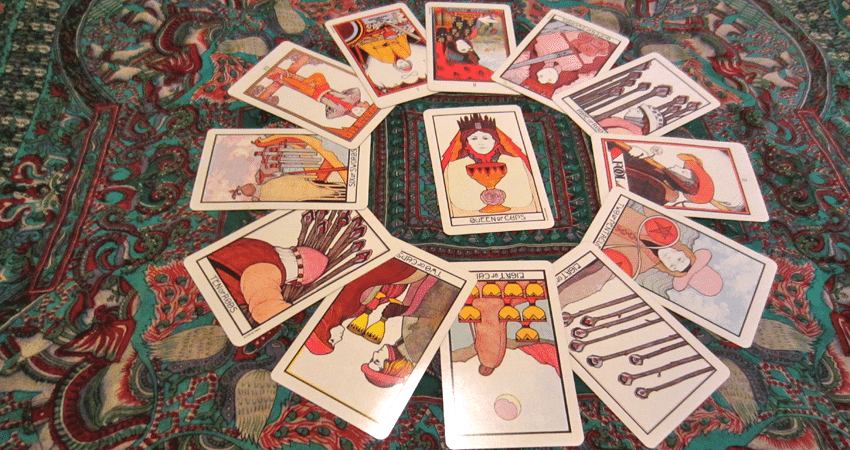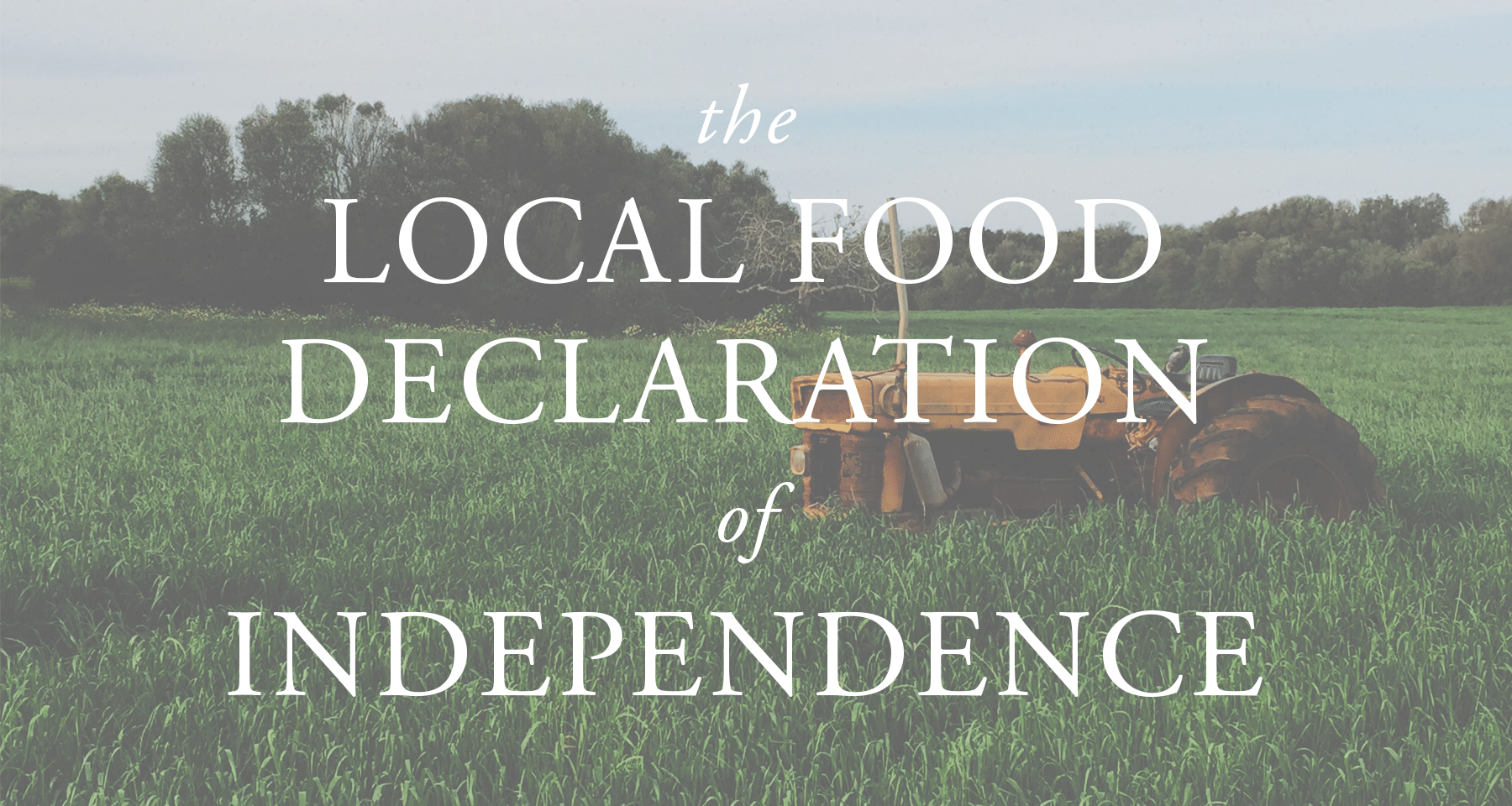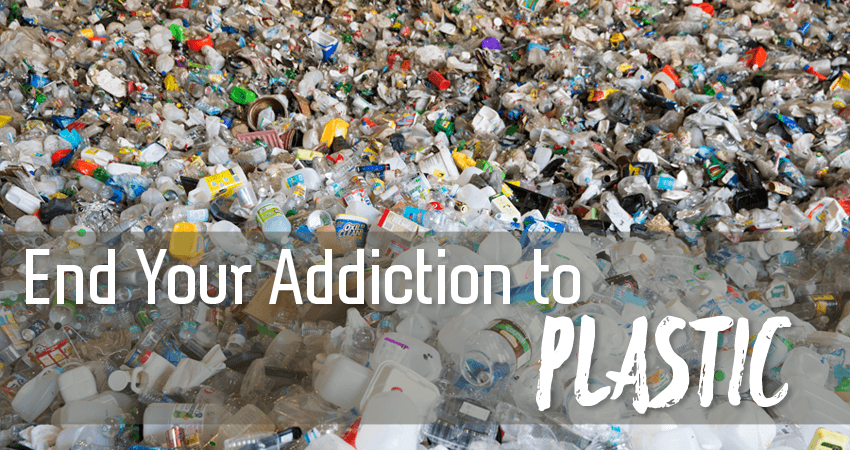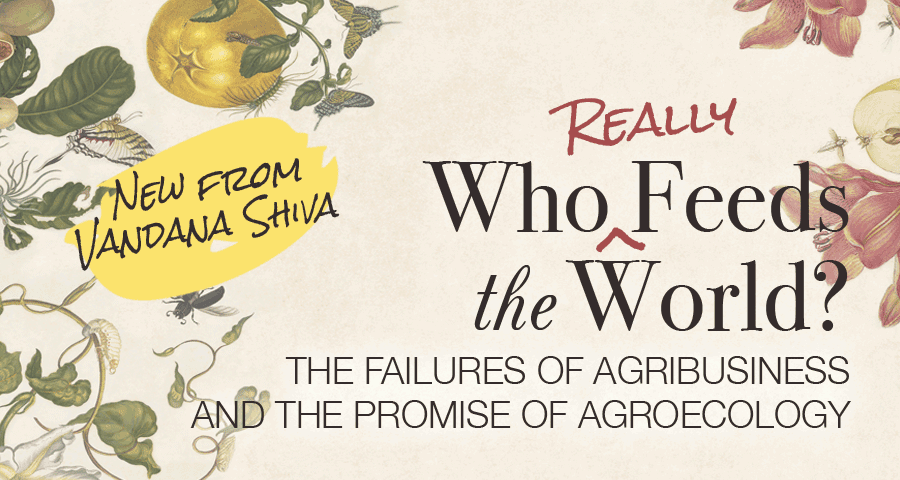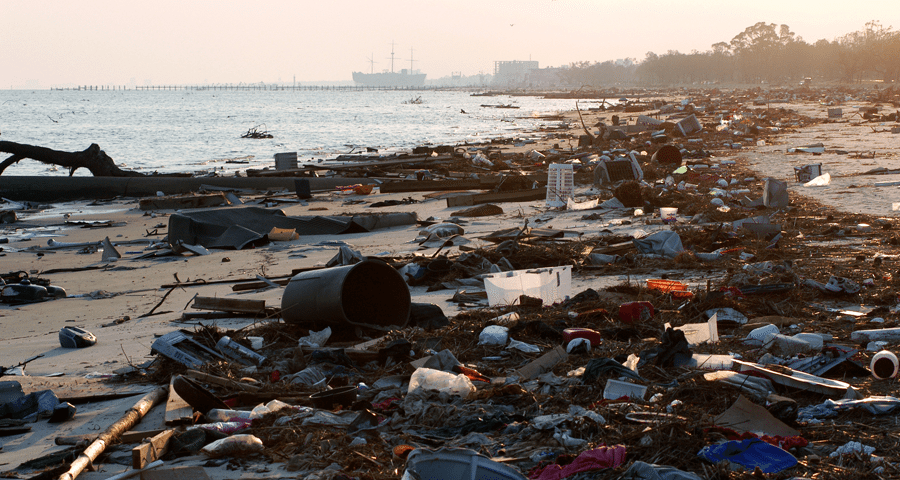
7 Easy Steps to a Zero-Waste Life
Categories: Ecology & Sustainability
As the reality of our environmental crisis sets in, more and more people are realizing that our current conservation efforts won’t be enough. It’s time to try new tactics. Inspired by Lauren Singer’s Trash is for Tossers blog, I decided to attempt a zero-waste life and was shocked by how easy it was to drastically reduce waste. Admittedly, I still can’t say that I’m living a trash-free life or one with as little waste as Lauren produces, but I’d guess that my contribution to landfills in the last year is at most a third of what it’s ever been before.
While I’m not one to push others to attempt this lifestyle, I think it’s a shame that more people don’t know how simple it is to reduce your waste. Even if you’re not looking to make a major lifestyle change, there are still ways to make a difference by picking and choosing from the habits listed below. So whether you’re trying to do this all the way or just do what you can, here’s a quick guide to creating less waste:
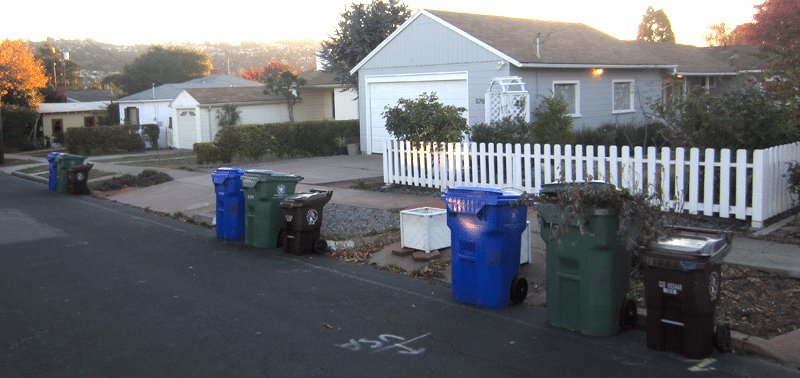
1. Research what’s recyclable and compostable in your area, where you can do this, and how to make it easy.
This is an important first step, which I should have done sooner. Having been a bit of recycling nut for most of my life, I thought I had this down. But I learned a few things that made my transition much easier! For instance, when I found out that the recycling center in the town next to mine accepts plastic film, I was able to reintroduce naan and tamales back into my life. (Update: Since writing this post I’ve decided to reduce my use of plastic, which you can read more about here.) In short, it’s definitely worth the while to get to know the resources available in your area!
Even with the best intentions and knowledge about recycling and composting in your area, there may still be times when waste is generated that cannot be easily disposed of through these methods. In such cases, it may be helpful to rent a dumpster to handle the excess waste. Dumpster rentals are available in various sizes and can be delivered right to your doorstep. This option allows you to dispose of waste quickly and conveniently, without having to make multiple trips to the dump. While reducing waste should always be the primary goal, renting a dumpster can be a helpful tool for managing waste responsibly and efficiently.
Here’s a bit of my own experience, which will hopefully give you some ideas:
- At first, I collected the compostable waste I made at work (tea bags, tamale husks, etc.) into a gallon Ziploc bag then took it home at the end of the week to empty, wash, and bring back.
- After some research into pricing, we got a green bin for the office. Having compost readily accessible at home and at work has definitely made this transition easier, and also created the opportunity for others to reduce their waste as well.
- At home, we also decided to switch our medium-sized city garbage bin for a smaller one, which not only encourages us to throw less away, but also saves us money.
- Lastly, I try to make sure to always have a recycling bin in arm’s reach in the rooms I spend the most time in. This could be as simple as a cardboard box.
Additional Recycling Resources: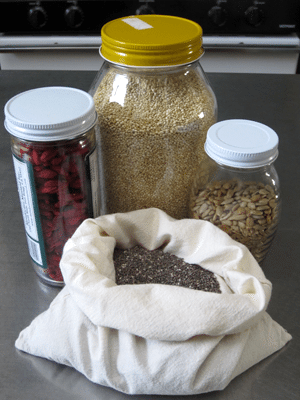
-
- Earth911’s recycling solutions search
- Waste Management’s “What Can I Recycle?“
- Aerosol’s Recycling 101: Paper, Glass, and Plastic
- Electronic Take Back’s “How to Recycle Electronics“
2. When grocery shopping, bring plenty of cloth bags, buy in bulk, and limit yourself to food in recyclable packaging.
Grocery shopping is the area where I noticed the biggest difference in my transition. The change has definitely encouraged me to eat more healthily since I no longer buy any artificial food. I actually lost about 20 lbs. in the first six months without making many other changes (having been a fairly healthy eater before).
-
-
- Cloth produce bags and shopping bags have been a lifesaver. And if I don’t have them on me I tend to limit my purchases to what I can fit in my purse and my hands.
- At home, instead of investing in mason jars, we keep marinara jars, jams jars, condiment bottles, etc. to store food in. It’s definitely been an easy, two-birds-with-one-stone solution.
- It’s helpful to take stock of the bulk food section of local grocery stores. I was amazed by how many items I found there that I’d been buying in packages before.
- I prefer buying produce at farmer’s markets for a few reasons, but one advantage is that I can leave any packaging with vendors, which I presume they’ll reuse.
- It’s definitely helpful to know what’s recyclable in your area when selecting packaged food. I’m a big fan of canned soups, which I mix with quinoa or rice and flaxseed oil for a quick meal.
-
3. Use cloth dish towels, napkins, handkerchiefs, etc. instead of paper alternatives.
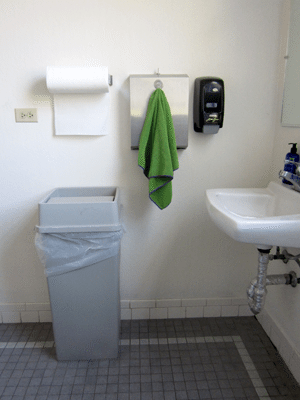 Like buying cloth shopping bags, this adjustment is an easy solution to cutting down on a ton of your daily waste. Out of all the steps on this list, it may be the one with the most bang for your buck.
Like buying cloth shopping bags, this adjustment is an easy solution to cutting down on a ton of your daily waste. Out of all the steps on this list, it may be the one with the most bang for your buck.
Here’s my approach and some other tips:
-
-
- At work, I make sure that I have access to clean hand towels in the kitchen, bathroom, and at my desk.
- I always keep a few handkerchiefs within arm’s reach in their own pocket of my bag.
- I found it’s easy to replace paper towels and sponges with hand towels at home.
- You could also consider buying a compostable dish brush or sponge.
- Most zero-waste folks use recycled toilet paper, but if you’re really gung-ho you could always try an attachable bidet. I once had a roommate who added one of these to our toilet and it seemed straight forward enough.
-
4. Restock your bathroom cabinet and shower with eco-friendly supplies.
Admittedly, this can be a bit of an investment, especially if you’re also opting for organic and vegan products, which tend to go hand-in-hand with zero-waste living. For cheaper alternatives, consider making things yourself (see Step 7).
If you’re planning to use your old supplies before getting new ones rather than giving them away to friends (I found it easiest to do a combo of both), try to keep the empty bottles and such. I was able to turn an old (BPA-free) shampoo bottle into my soap dispenser and now use an empty felt-tipped eyeliner pen to apply my new eyeliner.
Here’s a list of the essentials I use, plus some other ideas:
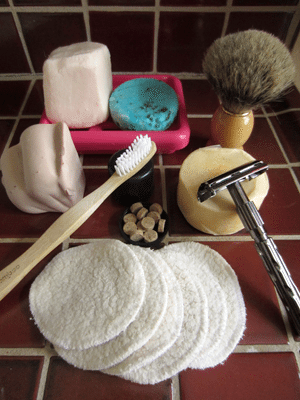
-
-
- Bamboo toothbrushes or African chew sticks (I’ve tried both and definitely prefer the former.)
- Minty toothpicks (I still use floss, but reuse each strand a few times.)
- Toothy Tabs or Lauren Singer’s simple recipe (See video below.)
- Bar soap or bulk Castile soap (A gallon is pricey, but keep in mind that it should last someone for years!)
- Shampoo bars
- Conditioner bars
- Solid facial cleansers
- Washable facial rounds
- Package-less deodorant (I’ve tried this but prefer cocoa butter and baking soda.)
- Safety razor (Research how to use these first! I did not and it hurt.)
- Shaving pucks
- Compostable shaving brush
-
Also worth considering:
-
-
- Eco-friendly makeup
- Chapstick in a recyclable tube
- Luna cup (loved by those who are willing to give it a try)
- IUD (effective, hassle-free, long-term, meant for women in committed relationships)
-
5. Say no to plastic silverware, plates, cups, straws, bags, boxes, etc. and avoid “biodegradable” alternatives.
I’ll start by saying that disposable plastics marketed as biodegradable take a really, really long time to break down and shouldn’t be put in city compost bins since they aren’t fit for industrial composting. Neither will they be breaking down in landfills any time soon; I had an environmental studies professor once mention that garbologists often extract bits of produce, such as bananas, from the bottom of landfills to find them unchanged after fifty years (here’s why—and you might also take a second to learn how long it takes different materials to break down).
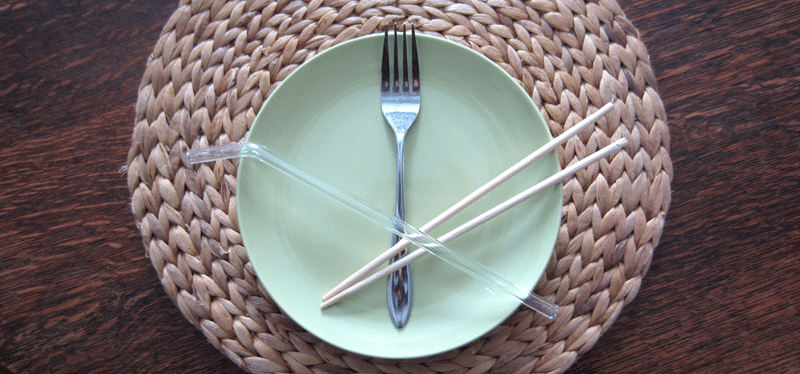
Second, I have to admit that eating out—especially getting food to go—is the area where I have the most trouble. I’m hoping to tackle this step next, but in the meantime here’s the info I have (I’ll come back with updates if I learn anything else):
-
-
- Some prepared food sections of grocery stores allow you to bring your own containers. Check with the places you frequent and see if this is an option. You could also consider doing this with take-out food.
- Eating at restaurants rather than getting food to go cuts down on most of the waste and also requires that you slow down to sit and (hopefully) enjoy your meal.
- When they’re available (and if you’re comfortable using them), chopsticks make a great alternative to plastic forks since they often come in recyclable paper and can be composted.
- At bars, you can bring a reusable straw or order drinks that come without them, like beer. It’s also helpful to make a mental note of which venues serve drinks in plastic cups and try to work around that.
- Check to see if you can use a regular plate and utensils if disposable ones are being offered somewhere near a kitchen, such as an event at someone’s home or an office party.
- Alternatively, you can keep camping utensils in your bag in case you ever need them.
-
6. Buy secondhand goods locally and donate, give away, sell, or repurpose items you no longer want.
Since I started reducing my waste I’ve noticed that I buy and generally consume much less. I also make a point to repurpose things instead of throwing them away—I’ve turned an old sweater into a bag, another into a skirt, spiral notebook wire and stones into jewelry, broken jewelry into a car charm, and old calendar pages into wall art.
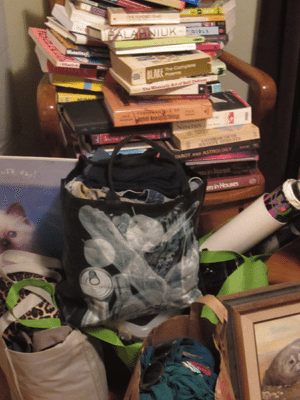 Items that I don’t know what to do with, I give away. After a recent deep clean (pictured), I gave a bag of torn clothing to H&M’s garment collecting program for recycling and a bag of odds and ends to the East Bay Depot for Creative Reuse. It’s worth finding out if there are stores in your area that takes items not typically accepted for resale.
Items that I don’t know what to do with, I give away. After a recent deep clean (pictured), I gave a bag of torn clothing to H&M’s garment collecting program for recycling and a bag of odds and ends to the East Bay Depot for Creative Reuse. It’s worth finding out if there are stores in your area that takes items not typically accepted for resale.
Aside from buying secondhand goods locally, here are some other habits you might consider:
-
-
- I try to limit my online shopping to vendors—like this one—that offer zero-waste products and ship in recyclable packaging.
- Instead of using Amazon, you can find books through Indiebound, visit your local library, or start your own community library.
- Sites like Craigslist and Nextdoor are great for discovering yard sales and free items in your area.
- Instead of buying gifts, why not make them? One of my favorites is layered brownie mix in a jar.
-
For repurposing the things you have but no longer want, or anything broken, Pinterest is an incredible resource. Lifehacker also has some great articles such as this one. And make sure not to miss Upcycle That, Instructables, or DIY Inspired. One more link I’ll leave you with is DIY & Craft’s 100 Ways to Repurpose and Reuse Broken Household Items.
7. 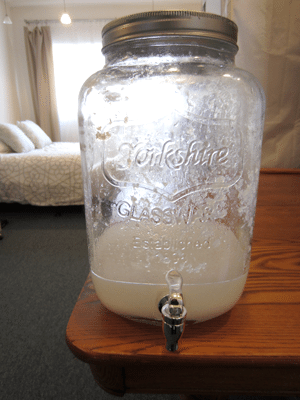 Find ecofriendly alternatives for other needs—such as cleaning supplies—or make your own.
Find ecofriendly alternatives for other needs—such as cleaning supplies—or make your own.
Before plastic and packaging existed, everyone made what they needed, and we definitely still can! There are some great resources out there, such as Pip Waller’s The Herbal Handbook for Home and Health: 501 Recipes for Healthy Living, Green Cleaning, and Natural Beauty, which I know many of my coworkers and I have on our bookshelves at home.
I’ve made a few things, like the laundry detergent pictured, but have yet to really dig into the DIY aspect of zero-waste living. I’m sure I will soon though since my 2016 resolution is to reduce my waste further and to stop throwing away the items I can’t recycle, repurpose, donate, or compost. Wish me luck!

